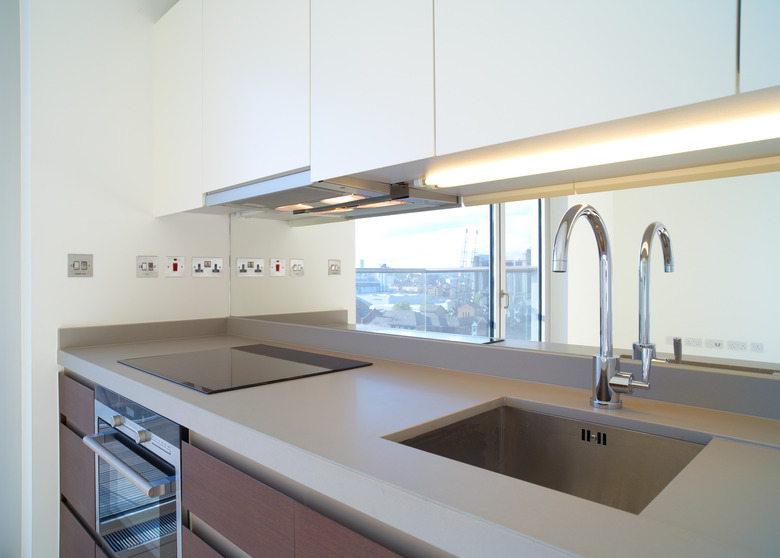How To Troubleshoot Fluorescent Lights
There's nothing worse than having to be in a room with a flickering, fluorescent light. It feels creepy and can also cause a terrible headache. Most people choose fluorescent lights in order to save money. Found primarily in kitchens, offices, department stores, hospitals and warehouses, fluorescent lights waste less energy than incandescent lights and can save you as much as 40 percent on your energy bill. But that flickering light can make you crazy, so it's a good idea to know how to troubleshoot any problems you're having with fluorescent lighting.
How Fluorescent Lighting Works
How Fluorescent Lighting Works
If you crack open a fluorescent light (which you shouldn't do), you'll find a powdery substance called phosphor powder. Fluorescent lighting technology works when gases and mercury vapor react in a glass tube and produce an invisible UV light. This UV light then makes the phosphor powder glow, creating white fluorescent light.
The Ballast
The Ballast
In addition to the tubes commonly used for fluorescent lighting, this type of light also requires something called a ballast. A ballast is a long, rectangular box that controls and regulates the output of the fluorescent lights. Many different types of ballasts exist and you can buy one that matches your lighting needs. Some act as dimmers. Others can regulate the light output of different fixtures. Maybe you want to switch off or dim half of your lights at a certain time. A multi-ballast system could do this and save a lot of energy in the process.
Trouble Shoot a Flickering or Dead Fluorescent Light
Trouble Shoot a Flickering or Dead Fluorescent Light
If your light has burned out or is flickering, there are four things to check, in this order:
Power: This sounds like a no-brainer, but if your light is out, it's always a good idea to check your power source first. There could be a blown fuse, so check your circuit breaker. If all is well with the power, it's time to take a look at the starter or the tube.
Starter: A starter is a small knob or cylinder directly behind the tube. A lot of newer fluorescent bulbs don't have starters. But if yours does, this could be the problem. In order to replace the starter, you'll need to turn off the power, remove the tube, then twist the starter clockwise and pull it straight out. Put in a new starter, return the tube to its sockets and then try the power. If this didn't work, your next step is replacing the tube.
Tube: If there is a cover over the tubes, remove that and then inspect the tubes with the lights on. If a tube is dying, it will likely have a black band on one side. (If the black band is obvious, then you should try replacing the tube before replacing the starter.)
Turn off the power, remove the dying tube and replace it with a new one. That should stop the flickering and solve your problem. If it doesn't, try replacing the other tube in the fixture, even if it looks healthy. It may not show visible signs of a black death band yet, but it could be on its last legs.
Ballast: If the problem isn't solved by the above steps, the ballast needs replacing. Sometimes it's cheaper to get an entirely new fixture than to replace the ballast. You can weigh the cost against how much you like your current fixture.
If you decide to replace the ballast, make sure you bring your old one to the store in order to get the right replacement. Magnetic ballasts are the older versions, and if you have one of those you might want to pay a bit more for an electronic ballast. One advantage? You'll get rid of that well-known fluorescent light hum. Electronic ballasts also start faster. Any ballast that you buy will come with a diagram and instructions showing you how to install it.
Recycle if You Replace
Recycle if You Replace
If you end up either replacing a tube or doing away with your old fixture, you must recycle the tubes because they contain mercury. If you throw one of the tubes into the regular trash, it could break and release a toxic substance into the environment. There are local options for recycling this specialty item. Do a quick search online or call the city's trash and recycling department in order to safely dispose of your fluorescent bulbs.
